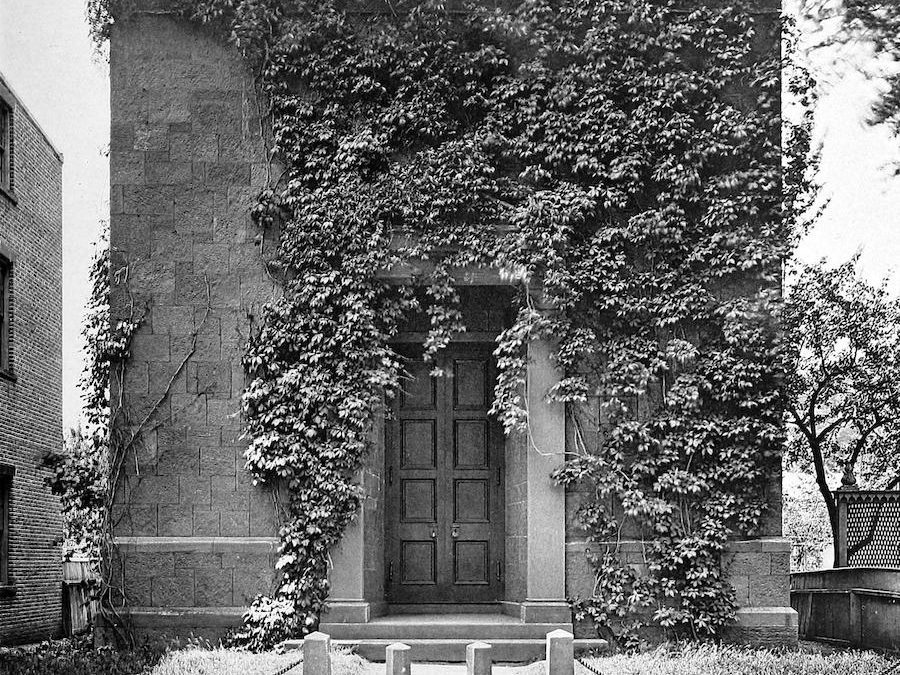The mere mention of their name conjures images of dark rituals, prestige, and secrecy. Skull and Crossbones, also known as “Skull and Bones,” is perhaps the most well-known secret society in the world. This elite fraternity claims power brokers, politicians, and captains of industry among its ranks. Its cryptic symbols and clandestine initiation rites have long fueled speculation and intrigue. But how much does the public truly know about this organization?
In this blog, we infiltrate the inner workings of the Skull and Crossbones Fraternity. We trace its origins to Yale University and the rise of its notorious tomb headquarters. You’ll learn about its secret rituals, famous alumni members, conspiracy theories, and the ongoing mystique around its operations.
Whether you find their secrecy captivating or alarming, Skull and Crossbones has undoubtedly left an indelible mark on history. By exploring its past and present, we can better understand the allure, influence, and ethical quandaries surrounding invite-only secret societies. Strap on your detective hat as we crack open the vault and unravel the secrets of the Skull and Crossbones Fraternity. The truth about this iconic order awaits…
What is the Skull and Crossbones Fraternity?
The Skull and Crossbones fraternity is a secret society that was supposedly founded around 1832 at an American university, most likely Yale. The fraternity’s members are known as “Phi Kaps”, “Skulls”, as well as “Skullhouse”, the latter two because of the skull and crossbones displayed on the fraternity’s badge. Very little is concretely known about the organization due to its strict secrecy and exclusivity over the years. However, it is believed to use macabre symbols like skulls, crossbones, and the number 322 in its imagery and rituals, which are rumored to take place in a foreboding tomb-like building on Yale’s campus. Though its membership and activities are shrouded in mystery, influential politicians, businessmen, and other eminent figures have been alleged to be members over the years. The name and symbols draw inspiration from pirate flags, and the society is believed to offer prestige and access to power and connections. However, it has also been surrounded by controversy and accusations of criminal conspiracies and corruption throughout its existence. The combination of its rumored elite membership, cryptic traditions, suspected influence, and impenetrable secrecy has kept public intrigue and speculation alive for centuries. The inner workings and motives of the Skull and Crossbones fraternity remain obscured in mystery.
Origins of the Skull and Crossbones Symbol
The skull and crossbones motif has long been associated with danger, death, and the underworld across cultures. As a memento mori, human skulls and bones symbolize mortality, a reminder of the inevitability of death. The universal iconography was appropriated extensively in flags and insignia to evoke an ominous air. Most infamously, the Jolly Roger skull and crossbones became the emblem of seafaring marauders. Believed to be designed to frighten merchant ships into surrendering without a fight, it became the iconic pirate flag during the 17th and 18th century Golden Age of Piracy. The hijacking of this sinister emblem is said to have inspired the naming and symbolism of the secretive Skull and Crossbones society.
The Jolly Roger
The piratical black flag bearing the ominous skull and crossbones, known as the Jolly Roger, came to represent danger and death on the high seas beginning in the early 18th century. Though its macabre imagery was intended to terrify potential victims into surrender, the name “Jolly Roger” imbued it with an eerily gleeful tone. Tales of burials and pirate lore depict the ominous Jolly Roger adorning pirate ships during plundering raids, and being raised as the last flag before captives were forced to walk the plank to doom in the sea’s depths. This infamous piratical symbol directly inspired the foreboding insignia and identity of the clandestine Skull and Crossbones society.
Founding of the Skull and Crossbones Society
While the exact date is uncertain, the Skull and Crossbones Society is believed to have been established around 1832 at an American university, with Yale being the most widely speculated. Shrouded in mystery since its inception, the order was reputedly founded by senior-class members of prominent families as an elite, invitation-only brotherhood. Early rumored members included many well-heeled students who would continue wielding influence in business, politics, and the arts throughout their prestigious careers and into old moneyed families. The untraceable origins and select membership of the tight-lipped society have long sparked intense curiosity and rumors.
Inside the Cryptic Tomb: Rituals, Relics, and Intrigue
The windowless, foreboding tomb that houses Skull and Bones has long been a source of fascination and speculation. While society fiercely guards the secrets within its walls, rumors abound regarding the rituals, stolen treasures, and mysteries contained inside.
The Initiation
New inductees reportedly undergo an elaborate initiation ritual steeped in macabre pageantry. Blindfolded and led to the tomb, initiates are supposedly subjected to oaths of silence and tests of courage meant to bond them to the order. Details remain scant, but current members have hinted at bizarre trials by fire.
Priceless Contraband
Skull and Bones lore whispers of ill-gotten artifacts secreted away in the tomb’s shadowy confines. Among the most scandalous claims:
- The stolen skull of Geronimo, grave-robbed by Prescott Bush in 1918.
- A treasure trove of purloined art and artifacts worth millions.
- Silverware allegedly belonged to Adolf Hitler.
While unverified, these rumors point to an alarming disregard for ethics and legality.
Mystical Rituals and Relics
Beyond stolen goods, the tomb purportedly brims with occult relics and paraphernalia used in secret society rituals:
- An ominous skull encased in glass serves as a memento mori.
- The Bones Whistle alerts members in times of distress.
- Their Skull and Bones handshake seals lifelong bonds.
- Robes, gongs, and other regalia set an esoteric mood.
Though cloaked in myth, one thing’s certain – behind the foreboding façade of the tomb lies a clandestine brotherhood shrouded in darkness and intrigue.
The Tomb – Meeting Location
The windowless, foreboding building on Yale’s campus known as The Tomb is believed to be the secret meeting hall of the Skull and Crossbones Society. Meant to resemble a sepulcher, the architecture conveys a sinister impression, the inner chambers strictly concealed. Outsiders are unwelcome, with only the rarest glimpses of non-members over the centuries adding to its air of mystery. Under cover of darkness, bizarre rituals are purported to take place inside, though whether ceremonies, hedonism, power brokerage, or other clandestine activities occur can only be speculated.
Famous Members Throughout Skull and Bones History
As an invite-only society, Skull and Bones has selectively handpicked only the most elite individuals to join its ranks. While complete membership lists remain guarded, some prominent members over the years include:
William Howard Taft (Class of 1878)
The exclusive club’s only U.S. President and Supreme Court Chief Justice. This overachiever notably introduced “Skull and Bones” into mainstream vernacular.
George H.W. Bush (Class of 1948)
His presidency made the Bushes the first family with both a President and First Lady as Bones members. His son George W. Bush later followed in his footsteps.
John Kerry (Class of 1966)
This Secretary of State and 2004 presidential candidate lost the election to fellow Bonesman George W. Bush in an ironic twist of fate.
Austan Goolsbee (Class of 1991)
This chief economic advisor to President Obama later drew controversy over his Skull and Bones ties.
Steve Mnuchin (Class of 1985)
The former Goldman Sachs executive turned Secretary of the Treasury has credited “Skull and Bones” for his successful career.
While only the tip of the iceberg, these public figures demonstrate society’s elite status and far-reaching influence. For over 200 years, Skull and Bones have bonded future leaders who steer national and global affairs from the shadows.
Conspiracy and Controversy: The Darkest Skull and Bones Theories
Beyond their aura of prestige and power, the veil of secrecy surrounding Skull and Bones has stirred troubling theories of concealed agendas and entanglements. While no proof exists to substantiate these wild conjectures, they underscore the shadowy fraternity’s capacity to breed mistrust.
The Illuminati Connection
Some posit that Skull and Bones operates as a Yale-based arm of the notorious Illuminati secret society. This theory suggests an interconnected global network of elite cabals pulls the strings of world events. However, clear historical links between these two entities remain elusive.
CIA Ties
One persistent rumor alleges that Skull and Bones functions as a CIA recruitment funnel, systematically placing members in top intelligence roles. However, the CIA’s access to a broad talent pool makes this narrative improbable. Still, both organizations do value discreet exclusivity.
Alien Overlords
By far the most outlandish conspiracy paints Skull and Bones members as extraterrestrial overlords masquerading as humans. This sci-fi take argues that ultra-terrestrial time travelers seed global hierarchies to control mankind. But we have yet to uncover evidence of otherworldly Bonesmen.
In reality, nepotism and shared ideology likely account for most coincidental connections between alumni members. But when cloaked in secrecy, even old-fashioned cronyism can appear sinister. For now, the truth remains as obscure as the tomb that houses their rituals.
Secrecy and Rituals
True to its name and legacy, the Skull and Crossbones Society steadfastly maintains utmost secrecy in all its affairs. Members face dire consequences for any disclosure, forced to take a lifelong vow of silence about their inner workings and dealings. This stringent confidentiality has enabled only fragmented leaks about initiation rites and unusual ceremonies speculated to take place on the premises. These mysterious rituals are believed to involve occult iconography, occultist texts, symbol-laden paraphernalia, and language alluding to death and the underworld. However, the practices and their meaning remain shrouded in secrecy for eternity.
Famous Symbols and Codes
While their specific meanings are obscured in mystery, certain symbols and codes are inextricably tied to the Skull and Crossbones in the public imagination. The numeral 322 is strongly associated with the order, appearing in insignia, secret messages, and tattoos rumored to identify members. Other prominent symbols include demonic human skulls, hourglasses, cryptic text, and ciphers. These arcane symbols and secret messages have spawned endless analysis and conjecture, but defy definitive interpretation due to utmost secrecy.
Legacy and Enduring Mystique
The macabre yet intriguing aura around the Skull and Crossbones has permeated literature, film, and pop culture for centuries. Edgar Allan Poe, F. Scott Fitzgerald, and Hunter S. Thompson are among the creators whose notable works reference shadowy society. On-screen, it makes appearances in movies like The Good Shepherd. Secret orders hold a perennial fascination for the public, and the privilege and power associated with this one imbue it with a singular mystique. Despite scandals and criticism, the allure of uncovering the truth about the centuries-old Skull and Crossbones and its members’ influence endures.
A Secret Society Suspended
In 1873, Yale officials took the extraordinary step of banning the Skull and Bones Society from campus. This drastic disciplinary action resulted from increasing reports of destructive antics and hazardous hazing rituals.
While society’s clandestine nature makes details scarce, available accounts point to raucous behavior that crossed legal and ethical lines. Rumors swirled of vandalism, theft, and rowdy initiation rites bordering on abuse.
The administration’s harsh crackdown sent shockwaves through Yale’s social circles. Accustomed to special privileges, Skull and Bones faced public shame and revocation of their campus society rights.
Yet their exile proved short-lived. After just a few years in limbo, Skull and Bones successfully negotiated their return, albeit with certain restrictions. Despite this temporary setback, the resilient order emerged stronger than ever.
The suspension exemplified society’s willingness to push boundaries and evade consequences in pursuit of secrecy and status. While a rare defeat, it demonstrated their power to flout rules binding ordinary students. The lesson: curbing the machinations of elite societies requires vigilance, not just a reprimand. Because privilege protects itself.
Bottom Line
This examination reveals how the Skull and Crossbones society has cultivated an image of privilege, danger, and mystery since its shadowy origins centuries ago. While the order’s secrecy ensures many specifics remain under speculation and many scandals mere conspiracy theories, its cryptic symbolism and ritual trappings continue to intrigue. The identity, activities, and interests of its rumored power-player members still elicit as much wariness as mystique. However, the obscurity maintained by the tight-lipped Skull and Crossbones nonetheless leaves many tantalizing questions unanswerable concerning its past, present, and future.
Frequently Asked Questions
What is the Skull and Crossbones Fraternity?
It is a secret society that was supposedly founded around 1832 at an American university, most likely Yale. It uses skulls, crossbones, and other macabre symbols as part of its imagery and rituals.
How did the society get its name?
The name is inspired by the Jolly Roger pirate flag, which featured a skull and crossbones to frighten potential victims. This symbolism evoked an aura of danger and mystery.
Who are some notable alleged members over the years?
Renowned alleged members include prominent politicians, businessmen, lawyers, artists and even criminals like Al Capone. Membership is seen as prestigious.
What happens at the society’s meetings?
Little is known about actual activities due to utmost secrecy. Speculation ranges from rituals, parties, conspiracies, power brokerage, and more in their tomb-like meeting hall.
Why is the Skull and Crossbones Fraternity so secretive?
A: Strict vows of silence ensure secrecy of all meetings, transactions, and memberships to maintain an air of mystery and exclusivity. Leaks are rare.
What controversies surround the society?
Critics accuse members of crimes, corruption, and conspiracies throughout history. But concrete evidence is lacking due to secrecy.
What mysterious symbols are associated with this group?
Symbols like the numerals 322 and hourglasses appear in coded messages. Their exact meanings remain obscure to outsiders.
How has pop culture portrayed the Skull and Crossbones?
The macabre mystique has inspired portrayals in literature, film, and television over the years. Most depict the society as elite yet sinister.
Why does interest and speculation about this society endure?
The combination of prominent membership, privilege, secrecy and suspected power keeps public fascination and suspicions alive.











